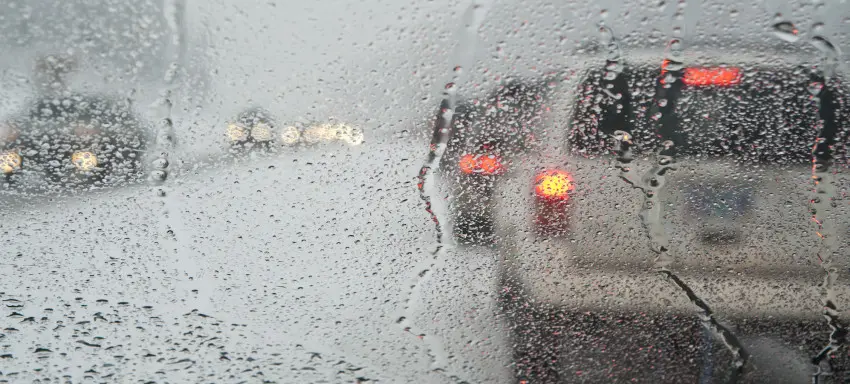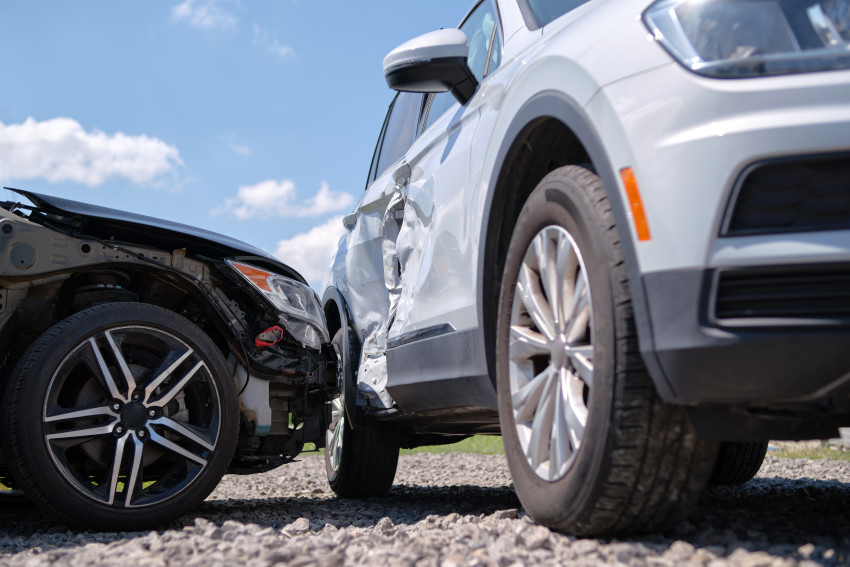
Safety Tips For Driving In The Rain
Springtime in Tennessee may be beautiful, but it also comes with plenty of rainfall on the roadways. In 2023, the Department of Transportation reported that most weather-related crashes occur on wet pavement and during rainfall. Each year, 75 percent of weather-related vehicle crashes occur on wet pavement and 47 percent happen during rainfall. Nearly 5,700 people are killed and more than 544,700 people are injured in crashes on wet pavement annually. Every year, over 3,400 people are killed and over 357,300 people are injured in crashes during rainfall. Here are a few tips to keep you in control this rainy season (and any other rain shower year-round for that matter).
Windshield wipers and headlights go hand in hand.
If your windshield wipers are turned on, your headlights should be turned on as well. This makes you more visible to other drivers and allows you to see the roadway. Not to mention, it’s a Tennessee law.
There’s no need to turn your brights on while driving in the rain. Instead, keep your headlights in “low beam” mode. Low beam headlights provide adequate visibility without causing excessive glare or reflections in the raindrops. Remember to keep your headlights clean and properly aligned to ensure optimal performance during rainy conditions.
Turn off the cruise control.
The cruise control feature on your vehicle is intended for dry road conditions only. If you drive over pooling rainwater and hydroplane while this feature is turned on, your car could be propelled forward resulting in a total loss of control. Avoid this disastrous scenario by keeping the cruise control feature turned off on rainy days.
Increase your stopping distance.
Rainwater creates a thin layer between your tires and the road, reducing the grip and making it more challenging to stop quickly. Be sure to leave plenty of space between your vehicle and the vehicle ahead of you. It can take up to three times the normal distance to stop your car on a wet road, so slow down and hang a little further back just to be cautious.
To gauge this distance, you can use the “five-second rule.” Choose a fixed object on the road, such as a sign or a lamppost, and when the vehicle ahead of you passes that object, start counting. If you reach the object before finishing the count to five seconds, it indicates that you’re following too closely and should increase your following distance. This technique helps ensure that you have sufficient time and space to react to any sudden changes or emergencies on the road.
Brake safely and responsibly.
When driving in wet conditions, it’s important to adjust your braking technique to prevent collisions. Wet road surfaces decrease traction, which can cause your car to slide forward and potentially collide with the vehicle in front of you. To avoid such accidents, it’s crucial to brake gently and start braking earlier than you would on dry roads. By doing so, you provide a clear signal to the driver behind you, indicating your intention to slow down. This cautious approach to braking helps ensure everyone’s safety on the road during wet weather.
Avoid unnecessary driving in poor weather conditions.
When the weather takes a turn for the worse, it’s a good idea to pause and evaluate whether your trip is really necessary. Poor weather like heavy rains, storms, or icy roads can make driving more dangerous and increase the risk of accidents. Try to plan your activities and errands around the weather forecast. By doing so, you avoid the risk of driving through potentially flooded roads.
In the United States, floods are the most common weather disasters. Be prepared, and get your home ready with our flood preparedness tips.
Exercise extra caution at night in the rain.
Driving in the rain at night can be challenging, but with some helpful tips, you can navigate safely through these conditions. Make sure your headlights are in good working condition and properly adjusted. Use low beam headlights to avoid blinding other drivers and to reduce the glare from raindrops. Additionally, you can minimize glare by dimming your dashboard lights and avoiding direct eye contact with oncoming headlights. It’s also beneficial to ensure both the inside and outside of your windshield are clean to enhance visibility. Furthermore, utilizing your vehicle’s ventilation system can help prevent fogging on the inside of your windows.
Remember to follow the earlier tips regarding properly adjusted low beam headlights, maintaining a safe speed, and staying alert for any hazards. By incorporating these suggestions into your nighttime rainy driving, you can enhance your safety and make your journey more enjoyable.
We are here for you.
Discover more about how we can help you stay safe on the road by visiting our related Auto resources, or by contacting your local agent.
Tennessee Insurance: Read More

What is an Auto Deductible?
October 9, 2024
When it comes to auto insurance, understanding the terminology is crucial to making informed decisions about your coverage. One term that often comes up in discussions about car insurance is the “auto deductible.” Read more

What Is Business Insurance?
December 10, 2024
Whether you are a small business owner or a seasoned entrepreneur, having the right insurance coverage is crucial to protect your assets and mitigate various risks. In this article, we aim to provide you with an in-depth understanding of what business insurance is, its significance, and how it can contribute to your company's success. Read more

What's The Difference Between Term and Whole Life Insurance?
May 31, 2024
Life insurance is a crucial aspect of financial planning, offering peace of mind and financial security for your loved ones in the face of life's uncertainties. In this article, we'll explore the key differences between these two options. Read more
